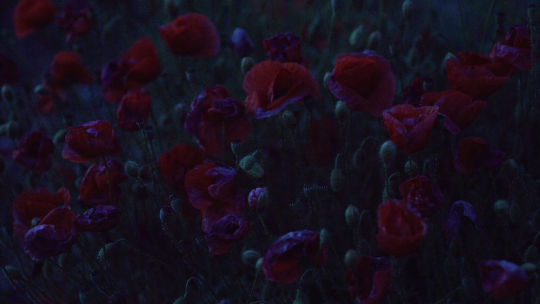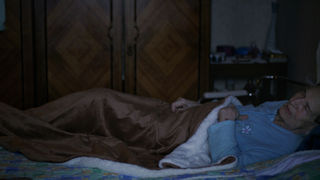#Marta Popivoda
Text
Dis/Content






#Sarajevo Film Festival#28thSFF#Talents Sarajevo#Sarajevo Talent Press#Dis/Content#Sara Dosa#Fire of Love#Maryna Er Gorbach#Klondike#Vedrana Pribačić#Mirta Puhlovski#Bigger Than Trauma#Amra Bakšić Čamo#Anamaria Antoci#Timka Grin#Teona Strugar Mitevska#Marta Popivoda#Marie Kreutzer#Monika Buttinger#Corsage#Nina Menkes#Brainwashed: Sex-Camera-Power#Fanni Somlyai#Hajibala Safarov#Marija Krstanović#Marina Lazarevska#Mladen Pechevski#Ramona Aristide#Dana Linssen#Irina Trocan
2 notes
·
View notes
Photo
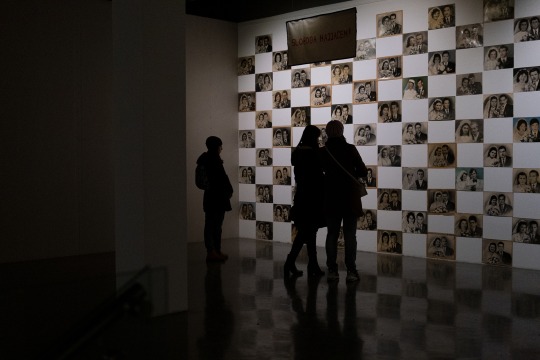
The 59th October Salon: the ‘Leap’ Edition
The October Salon is one of the oldest and most renowned international exhibitions of contemporary art in Serbia. Founded in 1960 by the City of Belgrade and inaugurated on the day of the liberation of the capital of former Yugoslavia from the Nazi invasion, initially, the show was meant to offer a representation of the […] The post The 59th October Salon: the ‘Leap’ Edition appeared first on BLOK MAGAZINE.
https://blokmagazine.com/the-59th-october-salon-the-leap-edition/
#Critique#Serbia#Ana Adamović#Ana Vujanović#Antonio Grgić#Belgrade#Božidar Mandić & Porodica bistrih potoka#Daliborka Đurić#DK#Dubravka Ugrešić#Dušan Rajić Dulait#Eric Corne#Giulia Menegale#Jednostavno rečeno#Jelena Mijić#Jorg Besser#Karkatag#Katarina Petrović#Marcus Coates#Marta Popivoda#Mila Panić#Milica Crnobrnja#Milica Rakić#Milica Tomić#Mladen Marić#Nemanja Cvijanović#Nemanja Knežević#October Salon#Predrag Nešković#Sanja Anđelković
0 notes
Text
Landscapes of Resistance
Recensie Landscapes of Resistance ★★★1/2 - vanaf 2-2 te zien op @IFFR
Je hoort het indrukwekkende en kritische verhaal van Sonja, dat als een luisterboek tot je komt.
#IFFR #IFFR2021 #LandscapesofResistance
De documentaire Landscapes of Resistance gaat over het verleden van Sonja. Zij was de eerste vrouwelijke partizaan van Servië en een van de leidsters van het verzet in Auschwitz. Herinneringen worden opgehaald. Wat wij van Landscapes of Resistance vinden, lees je in onze recensie.
Continue reading
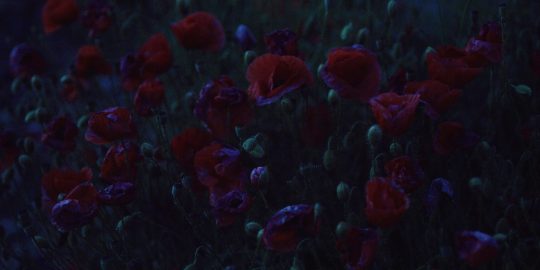
View On WordPress
#documentaire#IFFR#IFFR 2021#Ivanka Maksović#Ivo Vujanović#Landscapes of Resistance#Marta Popivoda#Pejzaži otpora#review#Servië#Sofija Sonja Vujanović
0 notes
Text
Die Balkone. Life, art, pandemic and proximity
With: Salwa Aleryani and Matheus Rocha Pitta, Ulf Aminde,
Rosa Barba and Jan St. Werner, Yael Bartana and Saskia
Wendland, Elke Buhr and Tobi Müller, Matthias Daenschel,
Jeremiah Day and Alisa Margolis, Christina Dimitriadis, Sam
Durant and Ana Prvacki, Knut Eckstein, Theo Eshetu, Martin
Frese and Eva Scharrer at Tina Löffelbein’s, Olaf Grawert, Jan
Peter Hammer, Hannah Hurtzig, Stine Marie Jacobsen, Anne
Duk Hee Jordan and Pauline Doutreluingne, Christoph Keller,
Jessika Khazrik / Övül Ö. Durmusoglu, Matylda Krzykowski,
Xavier le Roy and Scarlet Yu, Lage Egal, Antonia Low and
Tommy Støckel, Lina Majdalanie and Rabih Mroué, Kamila
Metwaly and Max Schneider, Markus Miessen and Lena Mahr,
Tom McCarthy and Eva Stenram, Müller Dreimalklingeln and
Sonja Lau, Olaf Nicolai, Andrea Pichl, Marta Popivoda and Ana
Vujanović, David Rych and kids, Susanne Sachsse and Marc
Siegel, Isabella Sedeka, Antje Stahl and Felix-Emeric Tota, Raul
Walch, Joanna Warsza and Florian Malzacher, Christina Werner
and others.
Initiated by Övül Ö. Durmusoglu and Joanna Warsza
“If we behave like those on the other side, then we are the
other side. Instead of changing the world, all we’ll achieve is a
reflection of the one we want to destroy.”
Jean Genet, The Balcony
We are at the very beginning of a new cycle that we cannot yet situate ourselves in. Its first palpable experiences are shifts in the relationship between inside and outside; in the distance between one day and another; between what is private, public, and political. At the same time, care, protection, and vulnerability are growing with new meanings.
Balconies serve as the public apertures of the private. They seem to be where the house ends, and yet not. In their political history, they have both been terraces of openness and hope, as well as platforms for authoritarianism and supremacy. Balconies today are the thresholds from which we can encounter the world during the confinement of the domestic: which is safe and sound for some, but not for others. They are emergency exits to take a breath of fresh air, catch a moment of sunshine or a smoke. While our freedom of mobility is on hold, they become unique sites of everyday performance or even civic mobilization. Every architecture school has its own way of designing balconies. Everyone has their own way of inhabiting them. Especially now.
In times of quarantine, so many of us cultural workers living in Berlin happen to all be here; not far from each other, and yet absent as usual. We are asked to commit to the digital space, without critically estimating the effects of for-profit information technologies.
Berlin has an important history of artist squats, takeovers, one-night exhibitions. In former East Germany, what was public, in a sense of non-intimidated or uncensored art and life, frequently happened in someone’s kitchen rather than out in the open. Specifically, Prenzlauer Berg is a place where home-made resistance against the GDR hit critical mass.
Die Balkone invites members of the artistic community living in Prenzlauer Berg to activate/inhabit their windows and balconies. With zero budget, no opening, and no crowds, the project proposes an intimate stroll (within current regulations) to search for signs of life, art, and points of kinship and connection. When some of us are cut off from our plans and our loved ones, we reach out to the balconies of the world, against isolation and individualization, not leaving everything in the hands of the virus and the fear it generates.
----------------------------------------------------------------------------------------
Wenn wir uns wie die auf der anderen Seite verhalten, dann sind wir die andere Seite. Anstatt die Welt zu verändern, werden wir nur eine Spiegelung derer, die wir zerstören wollen, erlangen.
Jean Genet, Der Balkon*
Wir stehen am Anfang eines neuen Zyklus, in dem wir uns noch nicht verorten können. Seine ersten greifbaren Erfahrungen sind Verschiebungen in der Beziehung zwischen Innen und Außen; in der Distanz zwischen einem Tag und dem nächsten; zwischen privat, öffentlich und politisch. Gleichzeitig wachsen Sorgfalt, Schutz und Verletzlichkeit und nehmen neue Bedeutungen an.
Balkone öffnen den privaten Raum nach außen. Sie befinden sich scheinbar da, wo das Haus endet, und doch wieder nicht. In ihrer politischen Geschichte stellten sie sowohl Terrassen der Offenheit und Hoffnung dar, als auch Plattformen für Autoritarismus und Vorherrschaft. Balkone sind heute die Schwellen, von denen aus wir der Welt in der Eingrenzung des Häuslichen begegnen können: Dieses Zuhause ist für einige selbstverständlich, für andere wiederum nicht. Sie sind Notausgänge, um frische Luft zu schnappen, einen Moment Sonnenschein oder eine Zigarette. Während unsere Mobilitätsfreiheit eingefroren ist, werden sie zu einzigartigen Orten täglicher Performance oder sogar bürgerlicher Mobilisierung. Jede Architekturschule hat ihre eigene Art, Balkone zu gestalten. Jeder hat seine eigene Art, sie zu bewohnen. Vor allem jetzt.
In Zeiten der Quarantäne sind so viele von uns Berliner Kulturschaffenden hier; nicht weit voneinander entfernt und doch wie immer abwesend. Wir werden gebeten, uns dem digitalen Raum zu widmen, ohne die Auswirkungen gewinnorientierter Informationstechnologien kritisch abzuschätzen.
Berlin birgt eine wichtige Geschichte von Hausbesetzungen, Übernahmen und One-Night-Ausstellungen. In der ehemaligen DDR passierte Öffentlichkeit – im Sinne einer nicht eingeschüchterten oder unzensierten Kunst und des Lebens – häufig in der Küche von Jemanden anstatt draußen im Freien. Insbesondere der Prenzlauer Berg ist ein Ort, an dem hausgemachter Widerstand gegen das DDR-Regime die kritische Masse erreichte.
Die Balkone lädt Mitglieder der im Prenzlauer Berg lebenden Künstler*innengemeinschaft ein, ihre Fenster und Balkone zu aktivieren / bewohnen. Ohne Budget, ohne Eröffnung und ohne Menschenmassen schlägt das Projekt einen intimen Spaziergang (im Rahmen der geltenden Vorschriften) vor, um nach Lebenszeichen, nach Kunst, Verwandtschafts- und Verbindungszeichen zu suchen. Zu Zeiten da einige von uns von ihren Plänen und ihren Lieben abgeschnitten sind, wenden wir uns den Balkonen der Welt zu, gegen Isolation und Individualisierung, und lassen nicht alles in den Händen des Virus und der Angst, die es erzeugt.
* Eva Scharrer
Thank you everyone for taking part, and especially to Kimberly Bradley, Józefina Chętko, Eva Scharrer and David Ulrichs for their generous help!
1 note
·
View note
Text
2º Lima Alterna Festival Internacional de Cine

2º Lima Alterna Festival Internacional de Cine
Comenta: Luis Vélez
Una vez concluidos el 25 Festival de Cine de Lima PUCP y el V MUTA, bajo mi personal apreciación, y haciendo el pequeño disclaimer de haber integrado su equipo en una etapa preparatoria, pienso que el 2º Lima Alterna Festival Internacional de Cine es sin duda el evento cinematográfico peruano de la presente temporada, principalmente por la riqueza de su programación y trabajo de curaduría. Hay una línea editorial, una visión conceptual y una apuesta seria.

Digital Video Editing with Adobe Premiere Pro: The Real-World Guide to Set Up and Workflow, de Hong Seong-yoon (Corea del Sur, 2020). Película inaugural del 2º Lima Alterna Festival Internacional de Cine.
Considero además, por ese y otros motivos, Lima Alterna es uno de los proyectos del audiovisual más valiosos y necesarios para nuestro medio cultural, y está realizado -soy testigo- por puro amor al cine. Regresando a lo de su programación, el festival es desafiante por la vitalidad que reside en su diversidad formal, geográfica y genérica (más de 70 títulos de más de 40 países no es poca cosa); cine que nos puede trasladar de una película de Kirguistán o Togo a otra de nuestros pueblos latinoamericanos; o capaz de conseguir nos aventuremos por terrenos vanguardistas para de ahí saltar a modos distintos de disfrutar de géneros como el terror, la ciencia ficción o la comedia.

Landscapes of Resistance, de Marta Popivoda (Serbia, 2021), en la Competencia Internacional del 2º Lima Alterna Festival Internacional de Cine.
Por cierto, el cine peruano no está ausente y es de destacar que alrededor de él Lima Alterna sea el primer festival que en la capital peruana da unos pasitos hacia el retorno a una presencialidad, con sala, butacas y pantalla grande. Hay competencias, muestras, actividades académicas y muy buenas pelis de exhibición especial, inauguración y clausura. Por motivos personales/familiares no podré cumplir con escribir sobre las películas, pero les extiendo la invitación a verlas. El menú está servido hasta el 26 de septiembre.

La luz de Masao Nakagawa, de Hideki Nakazaki (Perú, 2021), película lambayecana en la Competencia Peruana del 2º Lima Alterna Festival Internacional de Cine.
► Programación completa en la página web del festival aquí.
► Visionado en línea gracias a Cineaparte aquí.
0 notes
Text
Tiger Competition directors talk female empowerment at Rotterdam | News | Screen
Tiger Competition directors talk female empowerment at Rotterdam | News | Screen
Filmmakers in discussion included Ainhoa Rodríguez, Taiki Sakpisit, Marta Popivoda and Itonje Søimer Guttormsen.
Source: Tiger Competition directors talk female empowerment at Rotterdam | News | Screen
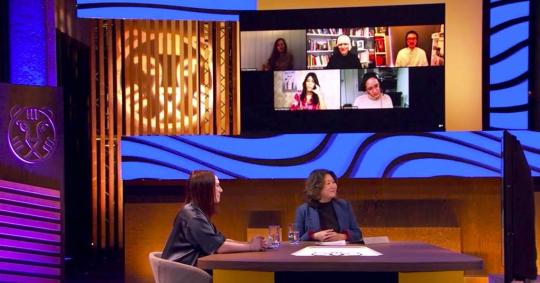
View On WordPress
0 notes
Photo
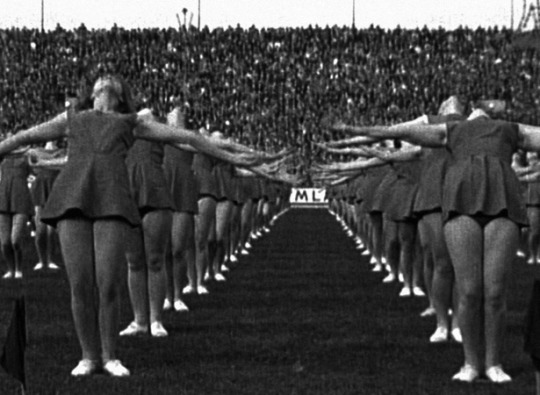
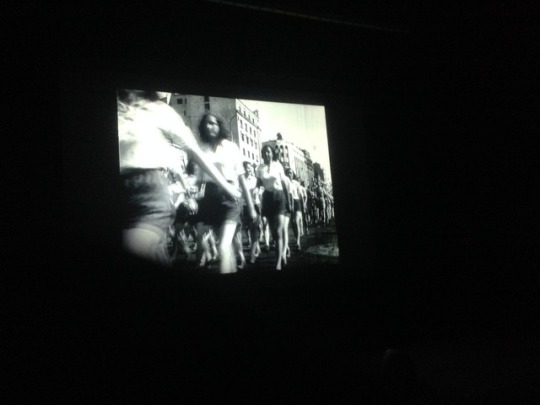
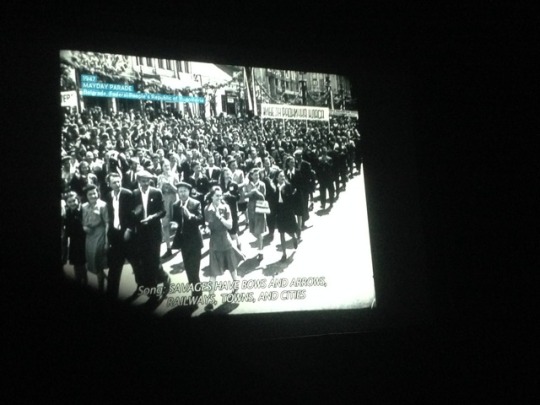
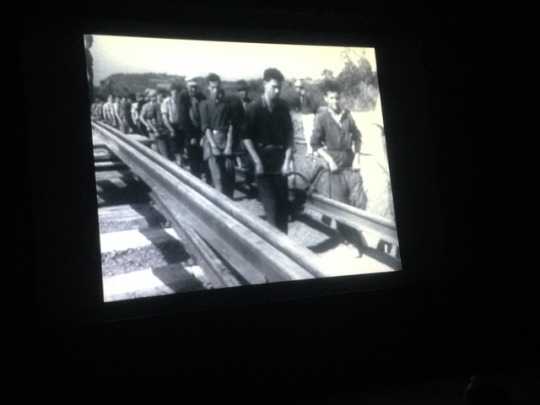
Following the conversation with Bojana Cvejić on Friday, 20 January 2017, 4.30pm, FD13 presents:
YUGOSLAVIA, HOW IDEOLOGY MOVED OUR COLLECTIVE BODY – a film directed by Marta Popivoda
6pm – 7pm, Weitz Cinema, Carleton College
Serbia ::: France ::: Germany
62 min ::: 2013
“This research-based essay film is a very personal perspective on the history of socialist Yugoslavia, its dramatic end, and its recent transformation into a few democratic nation states. Experience of the dissolution of the state, and today’s “wild” capitalist reestablishment of the class system in Serbia are my reasons for going back through the media images and tracing the way one social system changed by performing itself in public space.” (Marta Popivoda)
The film deals with the question of how ideology performed itself in public space through mass performances. The author collected and analyzed film and video footage from the period of Yugoslavia (1945 – 2000), focusing on state performances (youth work actions, May Day parades, celebrations of the Youth Day, etc.) as well as counter-demonstrations (’68, student and civic demonstrations in the ‘90s, 5th October revolution, etc.). Going back through the images, the film traces how communist ideology was gradually exhausted through the changing relations between the people, ideology, and the state. The film ends at the doors of contemporary Serbian democracy and neoliberal capitalism, demanding that we reflect on why citizens so easily abandoned the ideas of socialist collectivism, brotherhood and unity, workers rights, and free education, replacing them, firstly, with nationalism and war, and then with a promise of freedom and democracy which instead turned out to be individualism and “wild” capitalism. In dramaturgical terms, the film combines the theoretical concepts of social choreography and social drama, transposing them into film language. Through this directorial gesture, Popivoda explores a genesis from Richard Sennett’s thesis – when ideology becomes a belief, it has the power to activate the people and their social behavior – to the thesis of Renata Salecl – at some point people in Yugoslavia had only a belief in belief: they didn’t believe in communist ideology anymore, but believed others did.
N.B. The film is a part of the two-year-long research project Performance and the Public, carried out by Ana Vujanović, Bojana Cvejić, and Marta Popivoda of the Belgrade theoretical-artistic collective TkH [Walking Theory] at Les Laboratoires d’Aubervilliers in Paris. Apart from the film, the research resulted in the book Public Sphere by Performance by Bojana Cvejić and Ana Vujanović.
Directed by Marta Popivoda
Written by Ana Vujanović, Marta Popivoda
Edited by Nataša Damnjanović
Executive Producer Dragana Jovović
Sound design Jakov Munižaba
Colorist Maja Radošević
Producers Marta Popivoda, Alice Chauchat
Co-Producer Ann Carolin Renninger
Produced by
TkH [Walking Theory], Belgrade
Les Laboratoires d’Aubervilliers, Paris
Universität der Künste Berlin, Berlin
joon film, Berlin
Supported by
Program Archive of Television Belgrade
Périphérie – Centre de création cinématographique
Dart film
3 notes
·
View notes
Photo
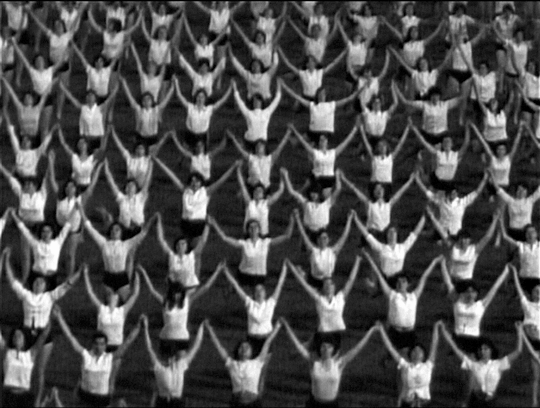



Marta Popivoda, Yugoslavia: How Ideology Moved Our Collective Body, 2013 (film still)
28 notes
·
View notes
Photo
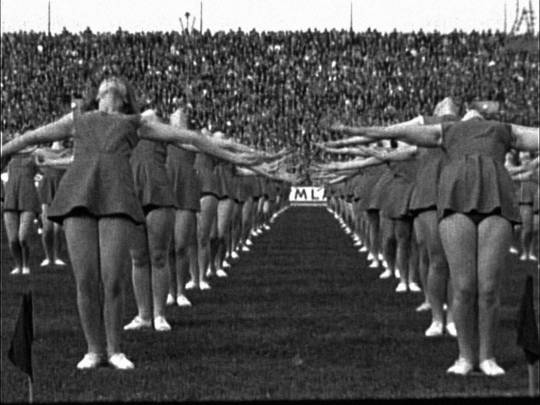
Monday: Marta Popivoda discusses her film Yugoslavia, How Ideology Moved Our Collective Body (2013), which explores how an ideology reveals itself through mass performance. Popivoda collected and analyzed film and video footage from the Yugoslavia years (1945–2000), focusing on state performances (youth work actions, May Day parades, celebrations of the Youth Day, etc.) and counter-demonstrations (student and civic demonstrations in 1968 and the 1990s, the 5 October Overthrow of 2000, etc.).
[Marta Popivoda. “Yugoslavia, How Ideology Moved our Collective Body.” 2013. Video, 62 minutes. Courtesy the artist]
#Marta Popivoda#Popivoda#Serbia#Yugoslavia#Yugoslavian#Ideology#Ideologies#May Day#Youth Day#Civic Demonstration#Proptest#Demonstration#October Overthrow#Modern Mondays#Media and Performance Art#Media and Performance#Film#MoMA Film
232 notes
·
View notes
Photo

Marta Popivoda, How Ideology Moved Our Collective Body, 2013
85 notes
·
View notes
Text
Marta Popivoda dobitnica Berlinske nagrade za umjetnost
Nagradu je uručio gradonačelnik Berlina Michael Müller i predsjednik Akademije umjetnosti Klaus Staeck
WWW – Umjetnica Marta Popivoda dobitnica je Berlinske nagrade za umjetnost, koju joj je dodjelila Akademija umjetnosti u Berlinu, objavio je portal See Cult.
Obraćajući se članovima Akademije umetnosti, koja od 1971. dodeljuje Berlinsku nagradu, Marta Popivoda je zahvalila Gradu Berlinu, koji je postao njen drugi grad i čiju otvorenost potvrđuje i sama nagrada koja je otišla u ruke umetnici koja…
View On WordPress
0 notes
Photo


FD13 residency for the arts presents: Bojana Cvejić
In conversation with Sandra Teitge at Carleton College (Weitz Center for Creativity, Room 236)
Friday, 20 January 2017, 4.30 – 5.30pm
followed by the screening of
“Yugoslavia, How Ideology Moved Our Collective Body” – a film directed by Marta Popivoda
6pm – 7pm, Cinema, Carleton College
Carleton College
One North College Street
Northfield, MN 55057
Talk in Chicago at Sector 2337 (with the support of the Goethe Institut Chicago)
Monday, 23 January 2017, 7pm
—
Bojana Cvejić (born in Belgrade/Serbia) is a performance theorist and performance maker based in Brussels. She is a co-founding member of TkH editorial collective (http://www.tkh-generator.net) with whom she has realized many projects and publications. Cvejić received her PhD in philosophy from the Centre for Research in Modern European Philosophy, London and MA and BA degrees in musicology and aesthetics from the Faculty of Music, University of the Arts, Belgrade.
Her latest books are Choreographing Problems: Expressive Concepts in European Contemporary Dance and Performance (Palgrave, forthcoming), Drumming & Rain: A Choreographer’s Score, co-written with A.T.De Keersmaeker (Mercator, Brussels, 2014), Parallel Slalom: Lexicon of Nonaligned Poetics, co-edited with G. S. Pristaš (TkH/CDU, Belgrade/Zagreb, 2013) and Public Sphere by Performance, co-written with A. Vujanović (b_books, Berlin, 2012). She has been (co-)author, dramaturge or performer in many dance and theater performances since 1996, with a.o. Jan Ritsema, Xavier Le Roy, Eszter Salamon, Mette Ingvartsen, and Christine De Smedt.
Cvejić teaches at various dance and performance programs in Europe and has been recently appointed as Professor of Philosophy of Art for the doctoral studies at Faculty for Media and Communication, University Singidunum in Belgrade. Her current research focuses on social choreography, technologies and performances of the self, and time and rhythm in performance poetics and Post-Fordist modes of production.
Cvejić’s FD13 residency (9–23 January 2017) is made possible through support from the Trust for Mutual Understanding (TMU).
Thank you to Cameron Gainer for hosting the residents.
Thank you to Judith Howard for making this conversation possible at Carleton College.
Thank you to our field coordinator Bruno Freeman for taking care of our artists.
0 notes
